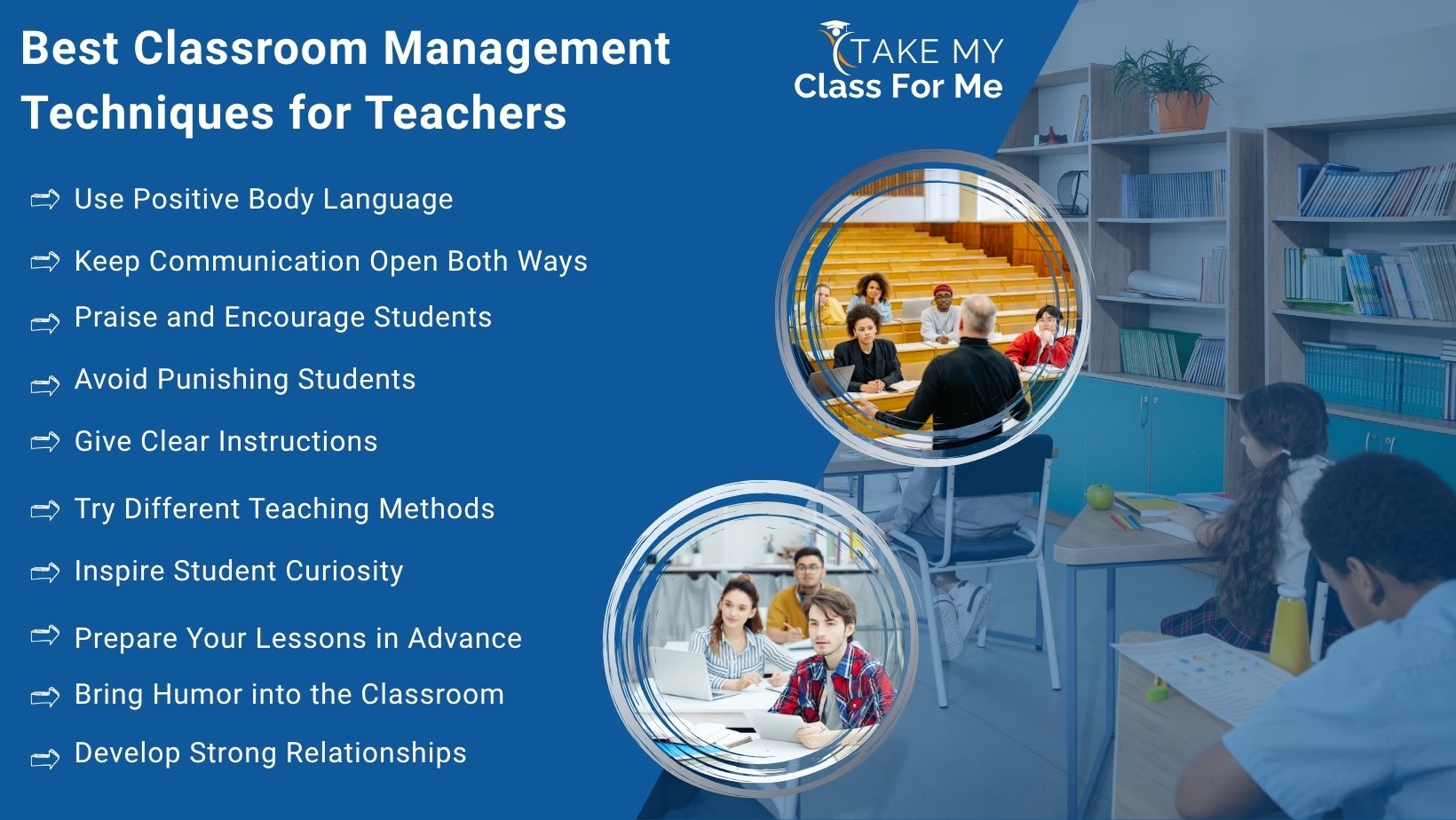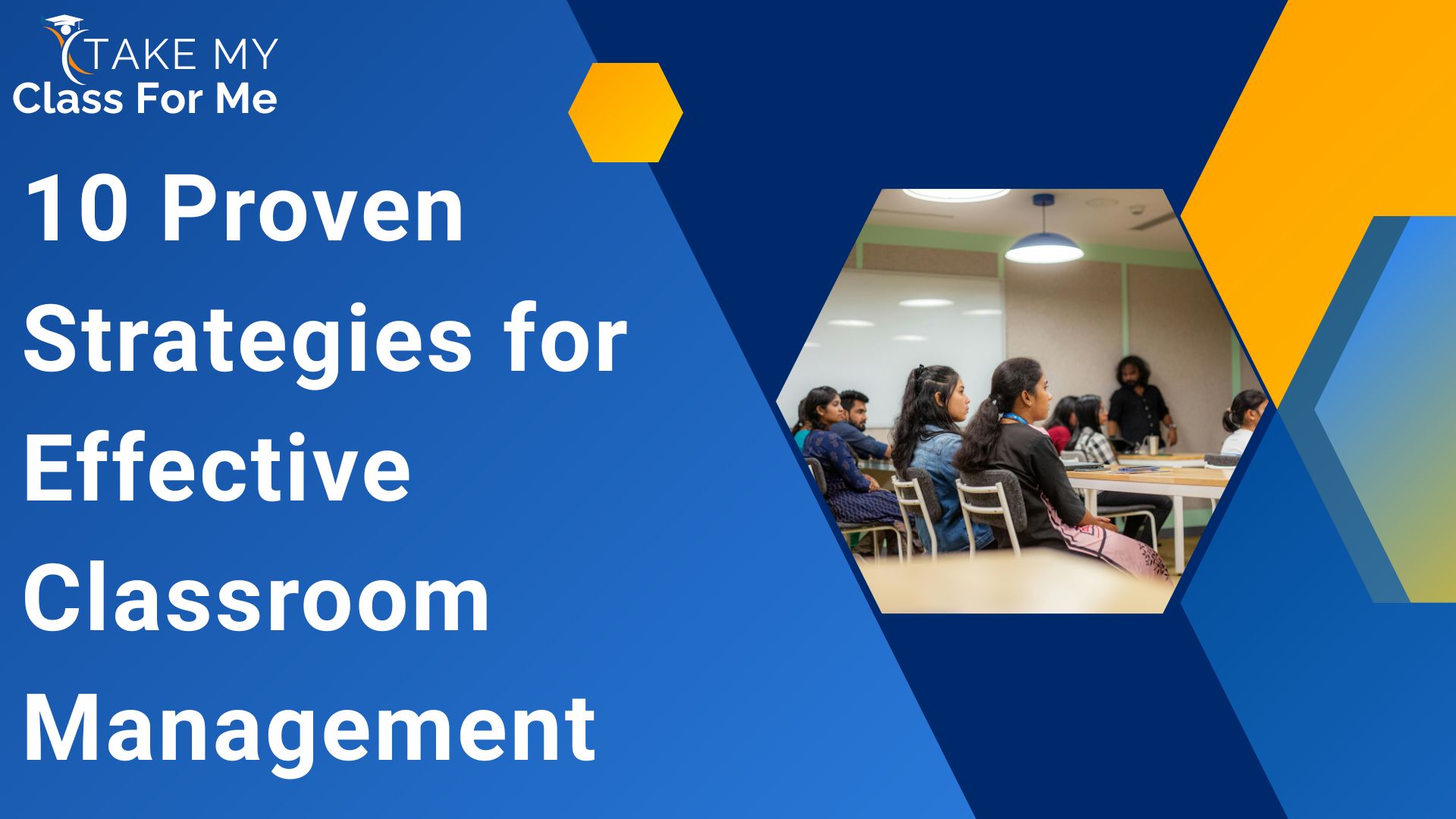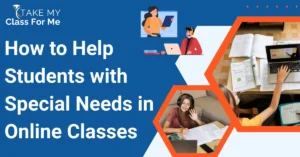Teachers can create a focused learning environment with effective classroom management strategies. Some simple yet great tips to manage the classroom include providing clear instructions, engaging students, avoiding punishments, and encouraging good behavior.
Teachers play a key role in guiding student behavior, keeping them motivated, and shaping the overall classroom environment. No matter whether you are new to teaching or have been doing it for years, knowing how to manage a classroom is essential. Especially with good classroom management skills, as a teacher, you can create a learning space that is respectful, organized, and productive. There are no fixed rules to manage a classroom, and so you can adjust your methods to reduce disruptions and keep students interested in lessons. You can even implement some effective classroom management strategies to develop a safe and welcoming learning space. If you have no idea how to improve student behavior and manage the classroom wisely, read this blog and follow the recommended classroom management techniques and tips.
Why is Classroom Management Important?
Managing a classroom is not about yelling, punishing students, or giving them complex assignments. Good classroom management is about creating a positive environment where teaching and learning can happen smoothly.
Teachers are not meant to act like dictators. Instead, their goal is to support students and provide a better learning experience for everyone.
Here is why classroom management matters so much for both teachers and students.
- Many students often say their classrooms are too noisy and disorganized, and teachers spend too much time just getting students to settle down. With a good classroom management plan, teachers can avoid these problems and focus more on teaching. This also helps reduce stress for both students and teachers.
- A classroom without proper management can feel stressful and chaotic. But when students follow rules and behave well, the class runs more smoothly, and teaching becomes more enjoyable.
- Distractions make it hard for students to concentrate, especially in online learning. Some even think, “Can I pay someone to do my online class for me?” just to keep up. Better classroom management helps students to stay focused and perform well in academics.
- Poor classroom management leads to low student participation. But when teachers create a positive and structured learning environment, students are more likely to join discussions and activities.
- Classroom management also helps build stronger relationships between teachers and students by creating a respectful and supportive learning space.
Best Classroom Management Techniques for Teachers

Whether you use classroom management games or software, everything begins with the first step. For new teachers, no matter how creative your teaching methods are, they won’t work well without good classroom management.
Here are some simple classroom management techniques that will help you build a strong foundation for successful teaching and learning.
1. Use Positive Body Language
Students find it hard to pay attention and learn in boring classrooms. But teachers who smile and use friendly body language can make learning easier. Always be careful with your gestures and body language because they can affect how students feel about learning. Especially when you teach a tough subject, make eye contact or give a quick smile to students. This will help students feel more comfortable and less scared of difficult subjects. Don’t just teach without encouraging your students. That can make learning harder.
2. Keep Communication Open Both Ways
Regularly talking with your students is a great way to keep the classroom positive and productive. No matter whether you discuss the subject you are teaching or something interesting you have read, make sure to involve students in the conversation. Between lectures, you can warn them about the risks of asking experts to take my online exam for me, share simple time management tips, and tell stories about famous people or fun facts to keep them engaged and connected.
3. Praise and Encourage Students
Praising students openly in the classroom can greatly motivate them to succeed academically. Celebrate even small achievements with applause. This will boost their self-esteem and encourage positive behavior.
4. Avoid Punishing Students
Many teachers believe that punishment is the only way to discipline students, but this is not true. Punishing students can actually harm their learning. Instead of punishing bad behavior right away, try other methods that keep the classroom environment positive. You can use rewards to motivate students to participate more. Otherwise, try to recognize even small efforts, as this makes students feel valued and encourages them to contribute more in class.
5. Give Clear Instructions
A well-managed classroom runs smoothly with clear rules, routines, and consequences. So, you should openly list all the instructions to students and ask them to follow them fairly. Furthermore, you should explain to students and make them understand that failing to meet these expectations will result in consequences.
6. Try Different Teaching Methods
It is important to change how you teach based on the grade, subject, and your students. For example, a hands-on electricity experiment is great for eighth graders but might be too difficult or chaotic for third graders. So, adjust your lessons and how hard they are to fit the students you are teaching. You can also ask your coworkers for new ideas and suggestions. Usually, paying attention to these things will help you teach in a way that suits your students’ needs.
7. Inspire Student Curiosity
Teachers should encourage students to have a growth mindset. Generally, using open-ended questions in class will help students learn more from their regular lessons. For example, a math teacher can ask students to solve problems during class. This will keep students interested and involved in learning.
8. Prepare Your Lessons in Advance
Having a well-planned lesson is important for managing your classroom well. So, make sure you have all the materials you need to keep students interested and focused on learning. Always know what you plan to teach and be ready to change it based on what your students need. Also, be clear about what you want your students to learn and how you will help them achieve it.
9. Bring Humor into the Classroom
Using humor in the classroom is a helpful way to manage students and make learning more enjoyable. It can make difficult ideas easier to understand and keep students focused. Humor also encourages students to participate more and creates a relaxed environment where they can learn better. Adding fun to your lessons can make them more interesting and memorable. However, it is important not to tease students, but to use humor positively and thoughtfully.
10. Develop Strong Relationships
Good classroom management is not complete without a strong connection with your students. So, try to build a good relationship with students. Avoid favoritism and make sure every student feels important in the classroom. You can do this by learning all their names, speaking to them kindly, and giving them your full attention. Be available to help them both inside and outside of class, especially when they need help with assignments. Also, celebrate their efforts and small successes to encourage them.
Final Thoughts
As a teacher, you can effectively manage your classroom by following the tactics recommended in this blog. In case you need more classroom management tips, send us a ‘take a class for me’ request. The skilled tutors on our team with a degree in education-related courses will guide you by sharing effective classroom management strategies. Especially, with their assistance, you can enhance your knowledge and create a proper lesson plan. Also, you can find ways to manage students’ behavior, motivate them, and promote good classroom culture.





